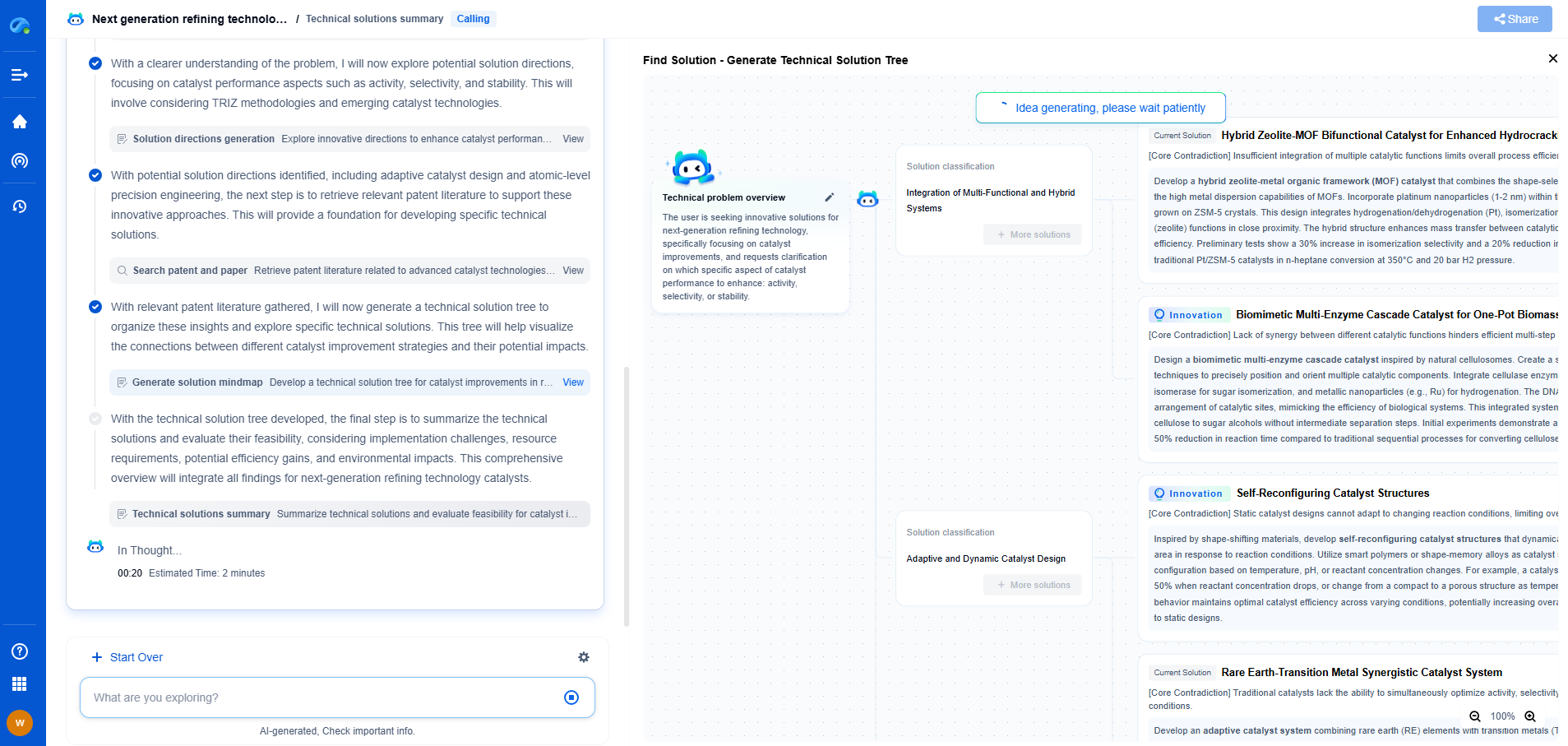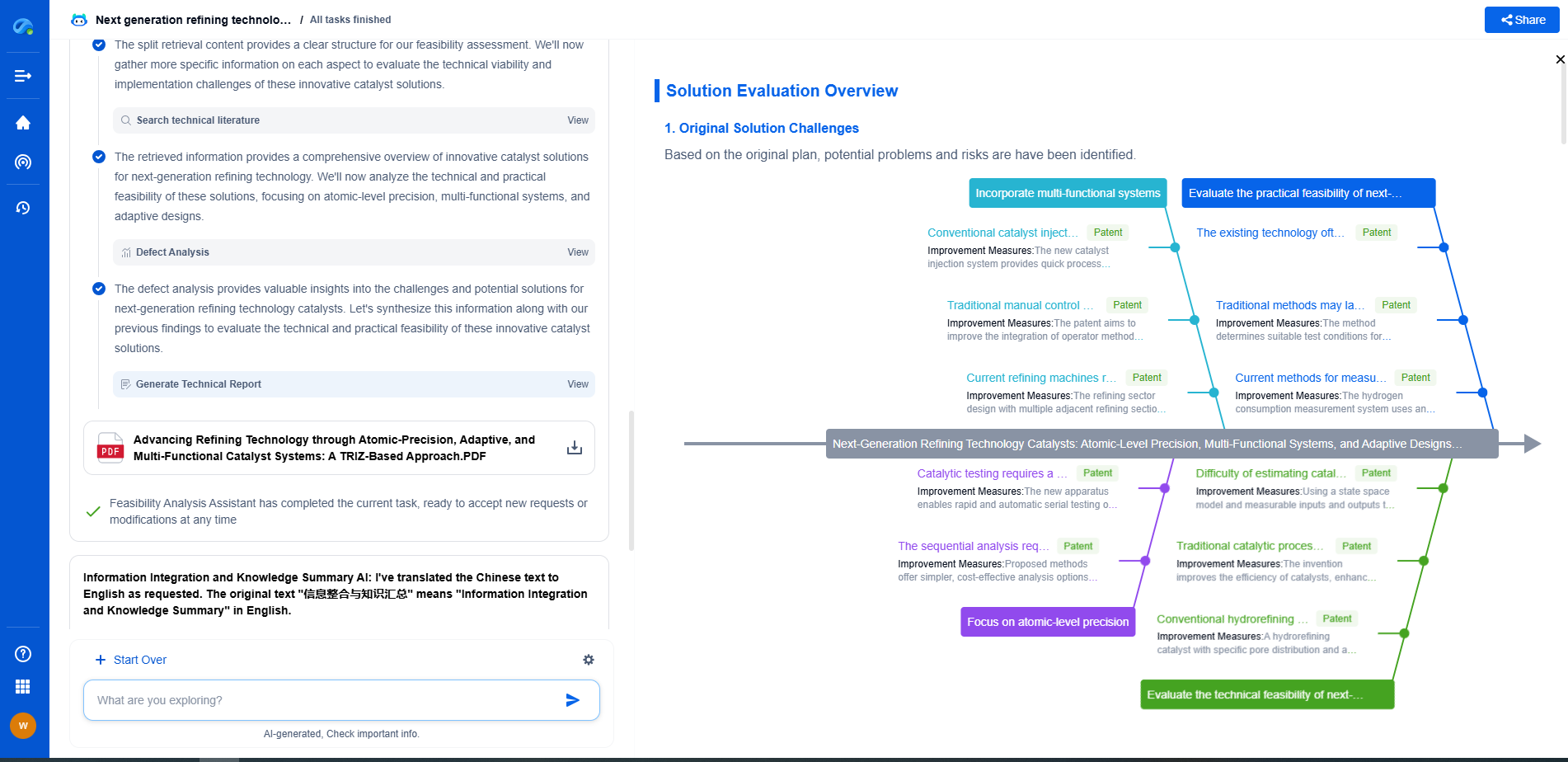Aerospace Batteries: Why Component Lightweighting is Critical
JUN 20, 2025 |
The aerospace industry is known for its cutting-edge innovations and relentless pursuit of efficiency and performance. One of the key areas of focus is the development of advanced batteries that can meet the demands of modern aircraft and spacecraft. As aerospace missions become more complex and ambitious, the need for efficient, high-performance batteries is greater than ever. Central to this pursuit is the concept of component lightweighting, which involves reducing the weight of battery components without compromising their functionality or safety.
The Role of Batteries in Aerospace Applications
Batteries are integral to aerospace applications, providing power for a wide range of systems, from avionics and navigation to propulsion and life-support systems. In space missions, batteries are crucial for maintaining operations during periods when solar power is unavailable, such as during eclipses or when a spacecraft is on the dark side of a planet. For aircraft, batteries contribute to the power supply for systems when engines are not running, such as in electric taxis and emergency power scenarios.
Challenges Faced in Aerospace Battery Development
Developing batteries for aerospace use comes with unique challenges. These batteries must withstand harsh environmental conditions, such as extreme temperatures, high radiation levels, and vacuum. They must be reliable, with long lifespans and robust performance to ensure mission success. Additionally, safety is paramount, as battery failures can have catastrophic consequences.
Why Lightweighting is Critical
Weight is a crucial consideration in aerospace applications. Reducing the weight of batteries can significantly impact the efficiency and performance of aircraft and spacecraft. Lighter batteries contribute to fuel savings, increased payload capacity, and extended range or mission duration. For space missions, every kilogram saved can lead to substantial cost savings in launch expenses and increased scientific payload capacities.
Methods of Achieving Lightweighting
Several strategies are employed to achieve lightweighting in aerospace batteries. Material innovation is at the forefront, with the development of advanced materials such as carbon composites and lightweight alloys that reduce battery weight while maintaining structural integrity. Design optimization is another critical approach, involving the minimization of excess material and the integration of multifunctional components that can reduce the overall system weight.
Impact on Performance and Efficiency
Lightweighting can dramatically enhance the performance and efficiency of aerospace batteries. A lighter battery can mean more available power without increasing the weight burden, allowing for more efficient aircraft and spacecraft designs. This improvement in power-to-weight ratio can lead to better acceleration, longer flight times, and enhanced maneuverability. Moreover, lightweight batteries can contribute to reducing the environmental impact of aerospace operations by lowering fuel consumption and emissions.
Future Trends in Aerospace Battery Lightweighting
The future of aerospace batteries is poised for exciting advancements, with ongoing research focusing on nanotechnology, solid-state batteries, and other innovative approaches to enhance lightweighting. As electric and hybrid propulsion systems gain traction in the aerospace sector, the demand for lightweight and efficient batteries will continue to grow. Collaborations between aerospace manufacturers, material scientists, and battery technologists are driving progress in this field, aiming to create next-generation batteries that meet the rigorous demands of future air and space travel.
Conclusion
In conclusion, lightweighting is a critical aspect of aerospace battery development that holds the potential to revolutionize efficiency and performance across the industry. As technology advances and the demand for sustainable and cost-effective solutions increases, the focus on reducing battery weight will remain a key priority. Embracing innovative materials, designs, and technologies will be essential in overcoming current challenges and unlocking new possibilities for the aerospace batteries of tomorrow.
Accelerate Breakthroughs in Fuel Cell and Battery Innovation—with the Power of AI
From solid-state battery breakthroughs to high-efficiency hydrogen fuel cells, keeping pace with fast-evolving chemistries, global patent landscapes, and emerging application pathways is an ever-growing challenge for R&D and IP professionals.
Patsnap Eureka, our intelligent AI assistant built for R&D professionals in high-tech sectors, empowers you with real-time expert-level analysis, technology roadmap exploration, and strategic mapping of core patents—all within a seamless, user-friendly interface.
Whether you're optimizing cathode formulations, evaluating electrolyte stability, or navigating the crowded patent space around battery pack design, Eureka empowers you to move faster and with greater confidence.
Start your journey with Patsnap Eureka today—streamline your research, enhance decision-making, and power the future of energy with AI-driven clarity.
- R&D
- Intellectual Property
- Life Sciences
- Materials
- Tech Scout
- Unparalleled Data Quality
- Higher Quality Content
- 60% Fewer Hallucinations
Browse by: Latest US Patents, China's latest patents, Technical Efficacy Thesaurus, Application Domain, Technology Topic, Popular Technical Reports.
© 2025 PatSnap. All rights reserved.Legal|Privacy policy|Modern Slavery Act Transparency Statement|Sitemap|About US| Contact US: help@patsnap.com

